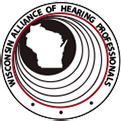Levels of hearing loss mean the severity of the hearing loss that the individual experiences, and hearing loss, on the other hand, is a major public health issue that is the third most common physical condition after arthritis and heart disease. It can occur suddenly but usually develops gradually.
General signs are difficulty hearing other people clearly and misinterpreting what they say. Asking people to repeat themselves, listening to music, or watching television with the volume turned up higher than other people want. Some may have difficulty with understanding words – especially against background noise or in a crowd of people frequently asking others to speak more slowly, clearly, and loudly.
Table of Contents
Understanding Levels of Hearing Loss and Deafness
It is important to distinguish between the different levels of hearing loss. Hearing loss is a reduced ability to hear sounds in the same way as other people, and deafness occurs when a person cannot understand speech through hearing, even when sound is amplified.
The severity of the hearing impairment is classified into the level of volume to be adjusted before sound can be heard. Some people classify “profound deafness” and “deafness” as the same thing, while others say that profound deafness is the end of the hearing spectrum.
In basic terms, the seriousness of your hearing loss is estimated in two ways:
- How loud something must be until you’ll be able to hear it.
- Which frequencies are harder for you to listen to (such as higher-pitched women’s voices compared to men’s voices).
As people get older, it is common to lose hearing in high frequencies, but hearing loss is complex and specific to the individual and changes over time. As a result, the slight decrease in hearing is associated with cognitive decrease.
Levels of Hearing Loss
| Levels of Hearing Loss | Hearing Threshold in Decibels (dB) | Hearing Loss |
|---|---|---|
| Normal Hearing | 0-25 dB | No symptoms |
| Mild Hearing Loss | 25-40 dB | Difficulty with hearing and understanding quiet conversations |
| Moderate Hearing Loss | 40-60 dB | Difficulty understanding speech |
| Severe Hearing Loss | 60-80 dB | Speech has to be louder than normal |
| Severe-to-Profound Hearing Loss | 80-90 dB | Difficulties with speech without amplification |
| Profound Hearing Loss | 90 dB and greater | Speech is difficult or impossible to hear and understand even with the amplified sound |
As we said in the beginning, levels of hearing loss are associated with the severity of the hearing loss that the individual experiences and there are different kinds of it.
1. Slight Hearing Loss
Slight hearing loss is diagnosed when you cannot hear low sounds in the range of 15 to 20 dB, like whispers rustling leaves.
Although this level is below the threshold used by most clinicians to diagnose hearing loss in adults, this level of hearing loss can still make it difficult to listen to the speech. In children, in fact, this level of loss is usually treated with hearing aids to help speech and language development.
2. Mild Hearing Loss
Individuals who have difficulty understanding some words when there’s a lot of background noise, but have no problem with regular conversations, may have mild hearing loss. It’s defined as having hearing loss between 26 dB and 40 dB in the speech frequencies.
3. Moderate Hearing Loss
Individuals asking people to repeat themselves a lot during conversations, especially while having a conversation over the phone, probably have moderate hearing loss. People with this degree of hearing loss may not hear sounds below 40 dB – 69 dB.
Solution for mild and moderate hearing loss usually are standard hearing aids.
4. Severe Hearing Loss
Individuals who cannot hear others speak without using a hearing aid or other amplification system, or tend to rely on lip-reading to understand the conversation, may have severe hearing loss.
With this degree of hearing loss, you can’t hear sounds lower than 70 dB – 94 dB.
5. Profound Hearing Loss
Individuals suffering from profound hearing loss can only hear extremely loud sounds, and even then it’s difficult to understand without a hearing aid or cochlear implant.
People suffering from profound hearing loss may prefer using sign language to communicate, and cannot hear sounds lower than 95 dB.
How are Levels of Hearing Loss Measured?
Our ears have three well-defined parts: the outer, middle, and inner ear. Audiometry tests can distinguish whether you have sensorineural hearing loss (damage to the nerve or cochlea) or conductive hearing loss (damage to the eardrum or the tiny ossicle bones).
An audiometry evaluation is a painless hearing test that measures a person’s ability to hear different sounds, pitches, or frequencies. It is also used to evaluate whether to use hearing aids or undergo a medical operation that may improve the hearing of the individual suffering from hearing loss problems.
Pure Tone Audiometry
A pure tone audiometry test measures the most delicate or least clear, sound that a person can hear. During the test, individuals wear earphones and hear a range of sounds directed to one ear at a time.
The loudness of sound is measured in decibels (dB). A whisper is about 20 dB, loud music ranges from 80 dB to 120 dB, and the loudest sound produced is about 180 dB. The tone of the sound is measured in frequencies (Hz), ranging from low bass tones range that varies from 50Hz to 60 Hz to high-pitched tones range 10,000 Hz or higher. The normal hearing spectrum is 250 Hz to 8,000 Hz at 25 dB or lower.
What to Expect From Visiting the Audiologist
What to expect from the audiologist seems like a challenging question when visiting for the first time. Lots of questions run through your mind about what they will ask or tell you. It is normal to have these concerns, but this particular hour or more testing period is nothing to worry about. Your first visit to the audiologist will be completely pain-free. Determining what options are available to you in improving your hearing condition is the first step. If there is a hearing condition.
From the results obtained, the audiologist examines with the person the means to remedy the situation. For example, he might suggest the use of assistive listening devices (headphones for television) or ambient noise control (to prevent the radio from playing loudly).
In many cases, individuals with hearing difficulties come out of such a consultation with the impression of having been listened to and understood. Above all, they received recommendations and technical tools adapted to their condition. Such an approach not only satisfies people but also reduces the cost of time and money for everyone, including the health system.
Additional Tests
- A tympanometry test detects problems such as fluid/wax buildup, perforated eardrums, ossicle bone damage, or tumors in the middle ear.
- Acoustic reflex testing assesses the cranial nerves and brainstem.
Find a Hearing Aid Professional in Wisconsin
If you experienced, or experience some of the problems we’ve gone through in the text above, visit this link Johnson Law Offices prepared for you and find yourself a hearing aid professional to start with the change for the better!
Sources
Contact Us
If you, or anyone you know, worked in noise and suffers from hearing loss, please do not hesitate to contact us.
Contact Us


